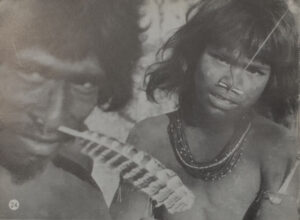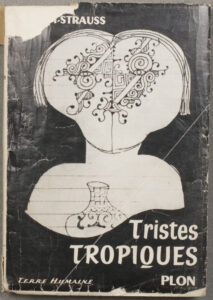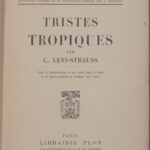Written more than a decade after Claude Lévi-Strauss completed his few years of fieldwork in the Mato Grosso and Amazonian regions of Brazil, Tristes Tropiques is more a memoir than a systematic ethnographical study. In it Lévi-Strauss poetically recounts his observations about the Caduveo, Bororo, Nambikwara, and Tupi-Kawahib peoples of Brazil. He also invites his readers to join him in India and Pakistan and then, somewhat tangentially, to accompany him during his escape from France to Martinique and then to New York City, as France fell to the Nazis. Of particular interest to us at this moment in history, perhaps, are the author’s musings on Islam and Buddhism, which often have been overlooked in the past.

Tristes Tropiques was published in France in 1955 to great acclaim and garnered Claude Lévi-Strauss a faithful readership. It has been translated twice into English, first by John Russell (1961) and again by John and Doreen Weightman (1973), and has appeared in many other languages as well. The book is still in print in both French and English.
Tristes Tropiques anchored Lévi-Strauss’s career. Immediately a household name in France, the author would soon be recognized, internationally and throughout the latter half of the twentieth century, as one of the two instrumental figures shaping and elaborating structuralism. Roman Jakobson, MIT Institute Professor from 1957 to 1965, was the other.
 This particular copy of Tristes Tropiques is inscribed by Lévi-Strauss to Jakobson. It was part of Jakobson’s library, which he bequeathed to the Institute along with his papers and manuscripts. The iconic paper cover of his copy is badly creased and has a tear. But the text is in near pristine condition, replete with uncut pages and devoid of any marginal markings, leaving to some intrepid researcher the challenge of finding the copy of Tristes Tropiques that Roman Jakobson actually read!
This particular copy of Tristes Tropiques is inscribed by Lévi-Strauss to Jakobson. It was part of Jakobson’s library, which he bequeathed to the Institute along with his papers and manuscripts. The iconic paper cover of his copy is badly creased and has a tear. But the text is in near pristine condition, replete with uncut pages and devoid of any marginal markings, leaving to some intrepid researcher the challenge of finding the copy of Tristes Tropiques that Roman Jakobson actually read!


